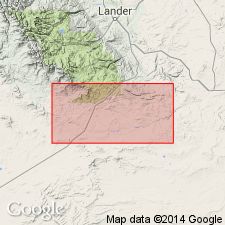
- Usage in publication:
-
- Diamond Springs formation
- Modifications:
-
- Named
- Dominant lithology:
-
- Serpentinite
- Schist
- Amphibolite
- AAPG geologic province:
-
- Northern Rocky Mountain region
Summary:
Named as one the supracrustal rock units of the South Pass greenstone belt. Is named for relatively continuous but poorly exposed outcrops south of Diamond Springs in SW sec. 19, T29N, R97W and in sec. 36. T29N. R98W, Fremont Co., WY in the Northern Rocky Mountain region. No type locality designated. Was described in an earlier report as a distinct unit of metabasalt, metagabbro, and serpentinite near Iron Mountain along the north margin of the South Pass greenstone belt. Is dominated by serpentinite, tremolite-talc-chlorite schist, and amphibolite. Can be separated chemically into ultramafic (peridotitic) komatiites, basaltic Komatiites, and tholeiitic basalts. Protolith determinations dependent on chemistry. The fine textures and conformable contacts suggest volcanic or subvolcanic origin. Has been affected by amphibolite-facies metamorphism and to lesser extent, by greenschist facies metamorphism. May have been part of a dismembered ophiolite complex. Probably represented high-magnesian flows and sills that were erupted on a sea floor. Archean age. Mapped (geologic map) in north part of area southwest of the Atlantic City iron mine.
Source: GNU records (USGS DDS-6; Denver GNULEX).
For more information, please contact Nancy Stamm, Geologic Names Committee Secretary.
Asterisk (*) indicates published by U.S. Geological Survey authors.
"No current usage" (†) implies that a name has been abandoned or has fallen into disuse. Former usage and, if known, replacement name given in parentheses ( ).
Slash (/) indicates name conflicts with nomenclatural guidelines (CSN, 1933; ACSN, 1961, 1970; NACSN, 1983, 2005, 2021). May be explained within brackets ([ ]).

